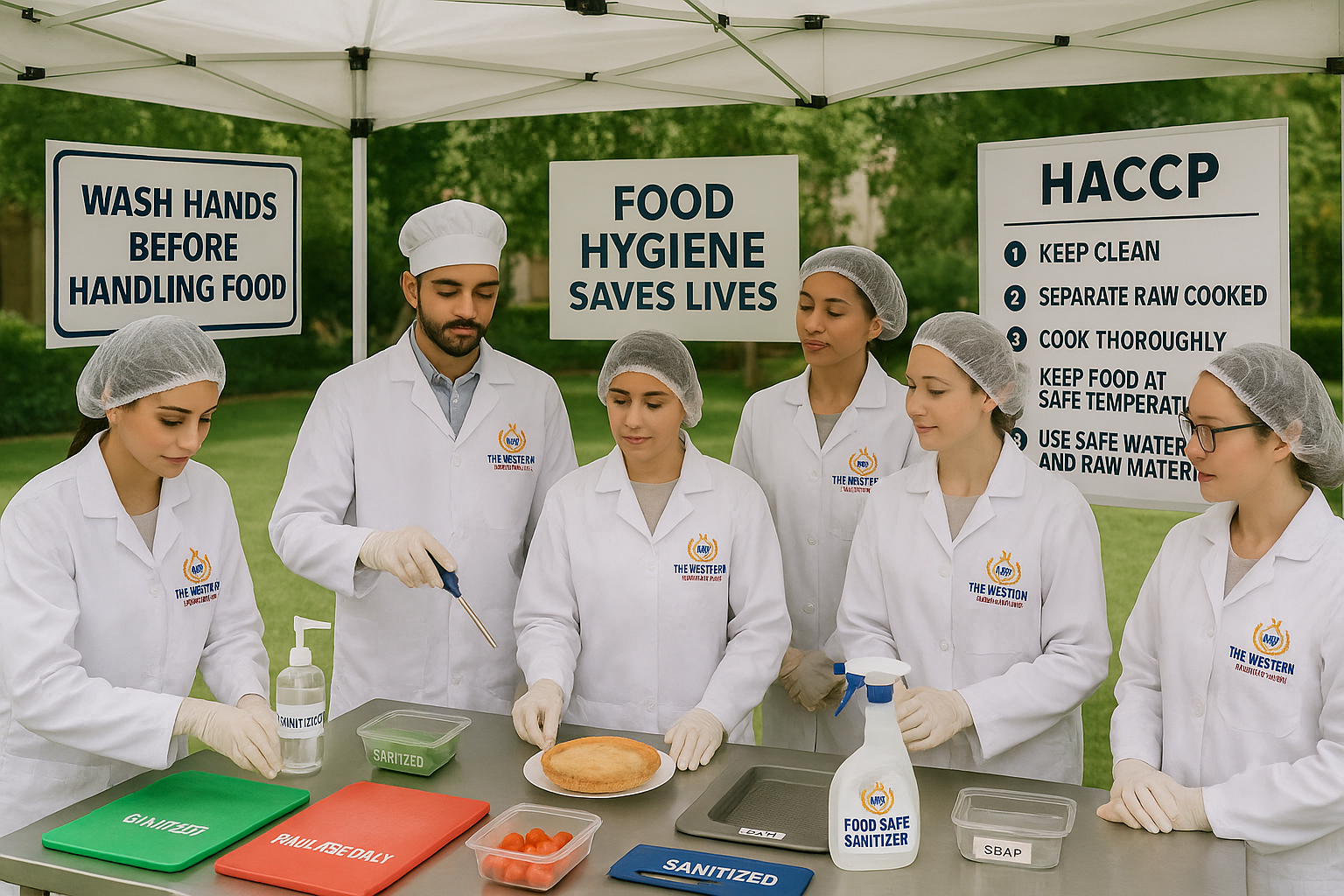At The Western Baking Affairs, we don’t just teach students how to bake—we shape professionals who understand the science, safety, and standards behind every recipe. One essential pillar of food safety in our curriculum is HACCP—a globally recognized system that ensures baked goods are not only delicious but also safe to eat.
🔍 What is HACCP?
HACCP (Hazard Analysis and Critical Control Points) is a systematic preventive approach to food safety. It identifies, evaluates, and controls hazards that could compromise food safety throughout the entire food production process.
In baking, HACCP helps prevent issues like microbial contamination, physical hazards (e.g., metal fragments), and chemical hazards (e.g., cleaning residues).
🍞 Why HACCP Matters in Baking
Although baking involves high temperatures that typically kill pathogens, risks can still arise in other stages—such as raw ingredient storage, handling, or post-bake packaging. Here’s how HACCP makes a difference in a bakery:
- Prevents Foodborne Illnesses
- Through control of biological, chemical, and physical hazards.
- Ensures Regulatory Compliance
- Meets international food safety standards, including those set by the FDA and WHO.
- Builds Consumer Trust
- Customers trust baked products from facilities that follow strict hygiene and safety protocols.
- Reduces Wastage
- Controlled processes minimize errors and losses during production.
🛠️ The 7 Principles of HACCP in Baking
At The Western Baking Affairs, we teach our students how to apply HACCP in a real bakery setting by following these seven foundational steps:
1. Conduct a Hazard Analysis
- Identify possible hazards at each stage (e.g., raw flour contamination, improper storage of eggs).
- Example: Flour can carry pathogens like E. coli if not handled properly.
2. Determine Critical Control Points (CCPs)
- Points in the process where control is essential to prevent or reduce hazards.
- Example: Oven baking at the right temperature is a CCP to kill bacteria.
3. Establish Critical Limits
- Set maximum or minimum values for each CCP.
- Example: Breads must reach 96°C internally to ensure they’re properly baked.
4. Establish Monitoring Procedures
- Track and document the critical limits.
- Example: Use thermometers to check dough temperature during proofing.
5. Establish Corrective Actions
- Define what to do if a critical limit is not met.
- Example: Re-bake or discard undercooked pastries.
6. Establish Verification Procedures
- Confirm the HACCP system is effective.
- Example: Periodic lab testing of products or sanitation audits.
7. Establish Documentation and Record Keeping
- Maintain records for audits and process improvements.
- Example: Temperature logs, sanitation checklists, ingredient sourcing documents.
🧪 Real-World HACCP in Action at The Western Baking Affairs
Our students learn and apply HACCP principles through:
- Hands-on baking labs
- Simulated production lines
- Interactive sessions on hazard identification
- Use of digital thermometers, pH meters, and hygiene swabs
They also learn how to design HACCP plans for different bakery products—from croissants and muffins to pies and cakes.
🧁 HACCP = Professionalism in Baking
In today’s world, bakers are not just artists—they’re also food scientists, safety advocates, and quality controllers. At The Western Baking Affairs, our mission is to blend passion with precision. Understanding HACCP is key to producing bakery items that not only taste amazing but also meet the highest standards of global food safety.
👨🎓 Join Us
Whether you dream of running your own bakery or leading quality assurance in a food company, mastering HACCP through our Western Baking Program ensures you’re prepared for success.
📚 Bake Safe. Bake Smart. Bake Western.


